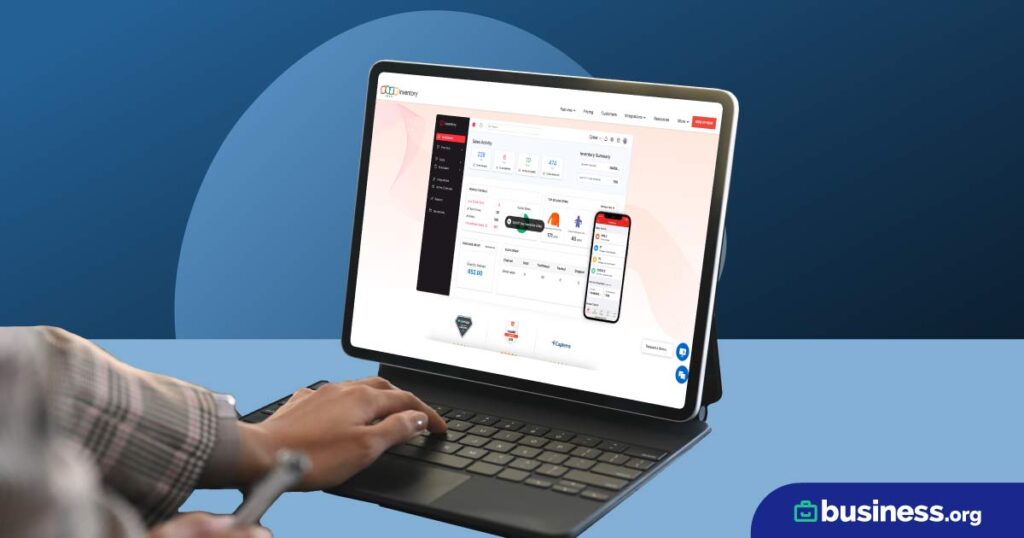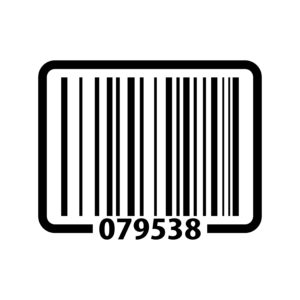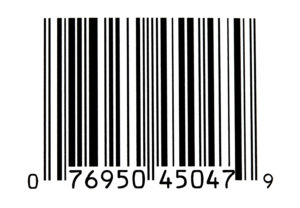We are committed to sharing unbiased reviews. Some of the links on our site are from our partners who compensate us. Read our editorial guidelines and advertising disclosure.
SKUs vs. UPCs: What’s the Difference?
If you’ve been researching inventory management options, you might have noticed that many resources use the terms SKU and UPC interchangeably to refer to product identifiers. But while you can use either option to track your products, UPC codes and SKU numbers are not actually the same.
To choose the best option for your inventory management system, it’s important to understand how SKUs and UPCs are different. Fortunately, we’ve broken it all down for you.
Are SKUs and UPCs the same?
Short answer: no, SKUs and UPCs are not the same. But they are very similar.
SKU (pronounced skew) is short for stock keeping unit. It’s an alphanumeric serial number that’s unique to your business—and it can be as long or as short as you want.
UPC on the other hand, is short for universal product code. It’s a 12-digit numeric serial number that stays the same for every company handling the product.
SKU vs. UPC
In addition, you can create and use as many SKUs as you want for free. On the other hand, for a UPC to be considered valid, it must be licensed through the GS1 (Global Standards One)—an organization responsible for maintaining business communication standards across the globe.
Finally, SKUs can be assigned to just about any asset within your business, including billable hours. UPCs can only be assigned to physical products.
With all that in mind, let’s dive into the details of what SKUs and UPCs are, how they’re used, and how they’re created.
By signing up I agree to the Terms of Use and Privacy Policy.
What is a SKU code?
SKU numbers are created by your business to track both your products and intangible assets internally (within your own company). They may include letters, numbers, or both.
And though it may seem like common sense, no two items should have the same SKU—otherwise, you wouldn’t be able to distinguish your products from each other in your inventory management system.
Who generates the SKU?
Since SKUs are only used by your company, you get to create them however you want. However, most businesses try to structure their SKUs to convey relevant product details. For instance, a shoe store may assign the following SKU to a blue high heel:
12-Q120-BLU-09
Within the code, the “12” might refer to a specific manufacturer (for recall purposes, if needed) or the item type (high heel). The “Q120” might refer to the release date for the product (first quarter, 2019), while “BLU” refers to the shoe’s color and “09” refers to the size.
The tricky part is ensuring that each product has a unique SKU. For example, there might be some overlap If your store releases another blue high heel from the same manufacturer in the first quarter of 2020.
Fortunately, many inventory management software platforms include SKU management, which helps you keep your SKU architecture consistent across your business without repeating product codes.
And if you don’t want to sign up for inventory management software, there are still a lot of free SKU generators on the web—though you’ll have to set up a SKU system to manually monitor your codes to avoid duplication.
Can SKUs be barcodes?
Some companies are able to work with their manufacturers to print their own SKU numbers or SKU barcodes directly on their product packaging. But if that isn’t an option for your business, you can definitely create SKU barcodes for your items.
Creating barcodes is relatively simple, but it may be time-consuming. Since the barcodes printed on the product packaging are usually UPCs instead of SKUs, you’ll have to add extra barcode stickers or store tags to your merchandise and shelves if you want barcodes that are uniquely for your SKUs. That’s assuming, of course, that you’re unable to work with the manufacturer to print your SKU barcode alongside the UPC on the product packaging itself.
Alternatively, you can simply use the UPC barcode for scanning purposes but set up your barcode scanning system to translate the UPC into your SKU. That way, any entries in your inventory or POS systems are tracked by SKU rather than UPC—without the extra hassle of adding extra barcode stickers to each product.
What are SKUs used for?
Because there’s no required length for a SKU, many retailers use SKUs to simplify their inventory tracking. Just imagine trying to find item BT8721 in your warehouse versus item 966192087215. Shorter, alphanumeric codes are just easier to sort, organize, and manually enter into your system.
Since SKUs can also contain product details, many businesses use them for sales purposes. In our shoe store example, a sales clerk could easily check stock for a customer by scanning the product SKU on the display pair. That saves your employee time (since they don’t have to walk to the back room and search for the shoe), and it allows the employee to direct the customer to similar products if the shoe is out of stock.
Many online retailers also use SKU numbers to recommend related products to shoppers—that’s how Amazon is able to deliver targeted ads based on the items you’ve recently looked at.
And because SKUs are unique identifiers used solely within your company, shoppers can’t search for your SKU online to find the same product from other retailers. This prevents your customers from finding identical products at a competitor’s store, helping you retain more business.
What is a UPC?
A UPC is a 12-digit product code that follows your product wherever it goes. So if you’re a wholesaler or manufacturer who sells your product to direct-to-consumer retailers, your product’s UPC number will stay the same wherever it’s sold. This allows consumers to track which retailers are selling the same product.
Who generates the UPC?
UPCs are unique for every product in the world—no two products can have the same UPC. Consequently, UPCs are regulated and administered by an international group called the GS1.
The responsibility for assigning a UPC falls to whatever company owns the intellectual rights to the product—in other words, the company that designed the product. If that’s your business, you’ll need to fill out an online application for a GS1 company prefix. Your GS1 prefix is a six- to nine-digit number that makes up the first chunk of all your company’s UPCs.
From there, you have to sign up for a prefix capacity plan. These plans can get you anywhere from 10 to 100,000 licensed UPCs using your company prefix.
GS1 prefix pricing schedule
Data effective 5/20/20. At publishing time, pricing and features are current but are subject to change. Offers may not be available in all areas.
It’s important to sign up for the right plan for your business right from the get-go. The GS1 doesn’t allow you to “upgrade” to a higher capacity plan once you’ve reached your UPC limit. Instead, you have to apply for a new company prefix and pay for a separate plan for your new items. That’s a massive headache, since you’ll have to deal with inconsistent UPCs across your system.
The next two to five digits of the UPC, though, is at the discretion of the UPC owner. Many companies opt to include their internal item number as part of their UPC, though that’s certainly not required. Manufacturers that hold the intellectual rights to an item may opt to use the item’s part number.
Finally, the last digit of your UPC is a check digit. This digit is calculated using all the other digits in the UPC, and it acts as a redundancy check—ensuring that no UPC is the same.
Can UPCs be barcodes?
Not only can UPCs be barcodes, it’s practically a requirement to print your UPC barcode on your product packaging.
UPCs are used to identify and track products across multiple retailers. So if you’re shipping your product to Amazon or another retailer, they will use the product’s UPC to verify that you’ve shipped the correct items in the correct quantity.
Why? Since UPCs are *ahem* universal, every company can use them—unlike SKUs, which vary from business to business. If you don’t provide the UPC barcode, your clients’ inventory systems won’t be able to recognize the products you’re shipping.
So while there’s no official law saying you have to print a UPC symbol on your product, not printing a UPC barcode kind of defeats the purpose of having a UPC in the first place.
What are UPCs used for?
UPC codes always start with the company prefix of the business that designed the product. This allows your business to essentially claim ownership of your products. It also allows consumers to trace the products they buy back to their root source (which can actually be a lot of fun if you’re into it).
UPC codes are also great for inventory tracking. While the longer, all-numeric code may be harder to manage than shorter SKUs, the GS1’s strict guidelines on UPC structure ensure that you don’t get duplicate UPCs within your inventory.
And since UPCs follow your product after you’ve sold it, they make it easy to track your products through every phase of the supply chain and across multiple retailers after they leave your warehouse.
The GS1 is an international organization, as well, so the UPC is an internationally recognized product code. This is essential for businesses looking to sell their products internationally, as many countries require a compliant product code for every item sold.
Should you use SKUs or UPCs?
In general, we think SKUs are best for direct-to-consumer retailers. SKUs prevent customers from shopping with competitors—so they’re better for business if you’re purchasing your products from a wholesaler.
If you’re the sole retailer and owner of your products (or your inventory is only for internal use within your company), a UPC may simply be unnecessary since you aren’t selling your items to other businesses. In that case, you can avoid the expense of licensing UPCs for your inventory and simply use an internal SKU—though you do run the risk of an unscrupulous third-party seller licensing your products under their own company prefix.
SKUs can also be helpful if your company sells hundreds or thousands of items since shorter, alphanumeric SKUs make it easier to find and track specific products.
UPCs, on the other hand, are practically mandatory for wholesalers. UPCs are best for barcode scanning and product tracking across multiple businesses. Plus, Amazon and some other marketplaces require you to have a UPC to sell products on their platform.
Likewise, UPCs are your best bet if you’re selling your product internationally. UPCs are recognized worldwide, so you’ll need them to sell in some countries where regulated product codes are required.
We also recommend you purchase and license UPCs for any product you’re selling wholesale that originates from your company. This allows consumers and other businesses to identify your company as the origin of your products, and it ensures that no other entity can claim ownership of your product. Removing the UPC from product packaging can even be classified as trademark infringement.
Keep in mind, though, that our recommendations are very general, and the right solution for your company will depend heavily on your business’s needs and priorities. Many retailers, for instance, find that using UPCs is simpler since they don’t have to generate all-new SKUs for each item on their shelves. And many wholesalers use SKUs to simplify their internal inventory tracking.
FAQ about SKUs and UPCs
Technically, there is a way to get official UPC codes without applying (and paying) for your own GS1 prefix. Instead of licensing a lump number of UPC codes (which can be too expensive for new or small businesses), you can purchase a UPC code through a third party. These UPC vendors essentially sell you a UPC under their own company prefix.
While this option may be cheaper for your business in the short run, it may make it difficult to track your inventory. Third-party UPC codes may be inconsistent (with different company prefixes and architecture), which may make it difficult to manually track your products. You also need to be careful to buy only from an authorized UPC reseller—otherwise, your codes will look like valid UPCs but won’t be recognized by Amazon or other companies.
Yes, you can absolutely use a UPC as a SKU. However, good SKUs should be short and easy to read, so it’s helpful to make them alphanumeric. UPCs are long and made up entirely of numbers, so they often don’t translate well into SKUs. Plus, if you’re using the entire UPC, there’s really no point in creating a separate, identical SKU—just use the UPC.
That being said, companies that license their own UPCs often include their internal SKU numbers within the UPC code (in those two to five digits immediately following the company prefix). This allows your business to use shorter codes that are more easily tracked than a 12-digit UPC while also gaining the ability to track their items across multiple businesses. The only drawback is your SKU can’t be alphanumeric since UPCs use only numerals.
Manufacturer part numbers are codes assigned to your products by your manufacturer. These model numbers allow the manufacturer to track batch dates, components used within the item, and more. Essentially, they’re SKUs used solely by the manufacturer.
Some businesses make the mistake of using their manufacturer’s part number as part of their SKU or UPC. The trouble is this can cause confusion if you ever change suppliers. The new supplier would use a different part number, which would make your product’s pre-existing SKU or UPC inconsistent.
ASIN is short for Amazon standard identification number. The ASIN essentially acts as a new, different SKU, used by Amazon once they purchase your product. Each item in Amazon’s inventory is assigned a unique ASIN, which helps the online retailer track products within its warehouses.
GTIN stands for global trade item number. Within North America, your UPC is also your GTIN. However, outside the US, Canada, and Mexico, GTINs are typically 13 digits long instead of 12. On the off chance that you’re required to use a 13-digit GTIN, you would simply add a 0 to the beginning of your 12-digit UPC.
EAN is short for European article number. It may also be referred to as an IAN, or international article number. EAN codes are usually 13 digits long, and they typically include a 3-digit prefix to indicate the product’s country of origin. However, if your items have an existing UPC, you can simply add a 0 to the beginning to form an EAN barcode.
Essentially, EANs are the European version of the UPC—both of which are recognized GTINs.
The takeaway
Whether you’re just starting your inventory management system or you’re trying to implement barcode scanners within your business, it’s important to use a uniform system of serial numbers to track your items. UPCs and SKUs are both valid types of product codes, but each has its own benefits.
Generally speaking, we think retailers should use SKUs as their primary form of product tracking, while wholesalers should use UPCs to track their items across multiple businesses. However, the right approach will vary based on your business’s needs.
Hopefully, with the information we’ve provided about SKUs and UPCs, you have the information you need to craft a tailored approach that suits your company.
SKUs and UPCs get even easier to use when paired with a scanning system—but barcode scanning isn’t your only option. Check out our guide to barcodes, RFID tags, and QR codes to find the best scanning system for your business.
Disclaimer
At Business.org, our research is meant to offer general product and service recommendations. We don't guarantee that our suggestions will work best for each individual or business, so consider your unique needs when choosing products and services.










